The missing emblem appeared first in the A&U 1978 Silmarillion Calendar (April) and the A&U 1977 Silmarillion Map Poster (bottom).
It also appeared in the US Ballantine Silmarillion Desk Calendar for the same year.
When Christopher produced Pictures, he only reproduced the version from the 1974 calendar.
Do note how Felagund's device is upside down.
On the Silmarillion Desk Calendar, the lefthand design was erroneously put on its side.
In all the Earendil devices, it should stand on its point.
The cleanest and clearest versions f the devices were in the A&U 1978 Calendar and in the 1st edition of Artist and Illustrator, with no greying and no yellowing.
It also appeared in the US Ballantine Silmarillion Desk Calendar for the same year.
When Christopher produced Pictures, he only reproduced the version from the 1974 calendar.
Do note how Felagund's device is upside down.
On the Silmarillion Desk Calendar, the lefthand design was erroneously put on its side.
In all the Earendil devices, it should stand on its point.
The cleanest and clearest versions f the devices were in the A&U 1978 Calendar and in the 1st edition of Artist and Illustrator, with no greying and no yellowing.
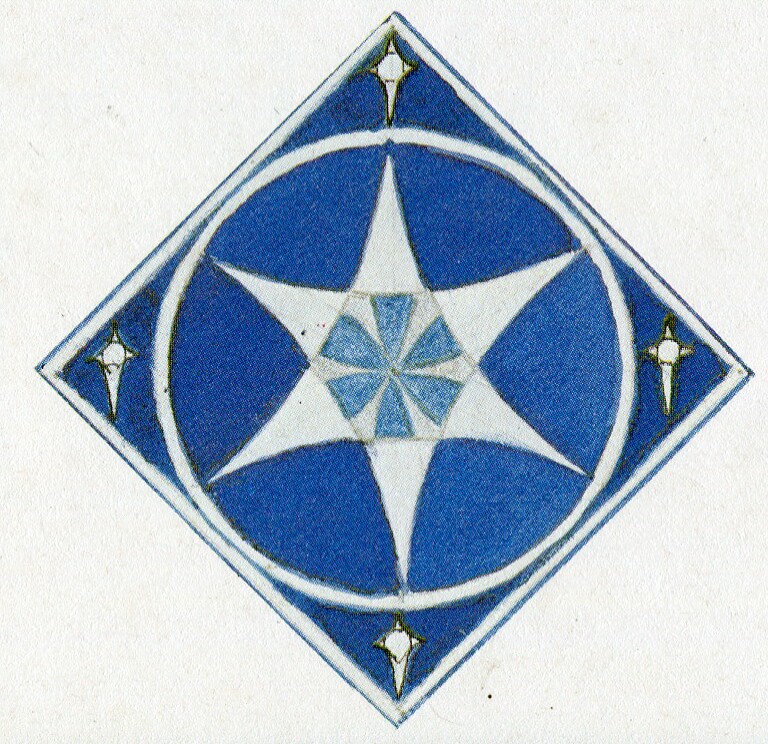
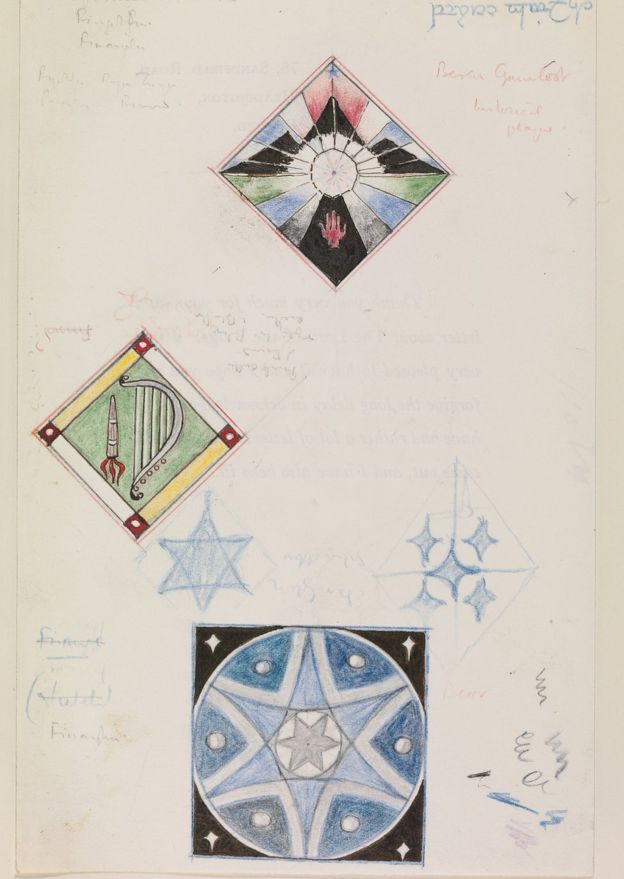
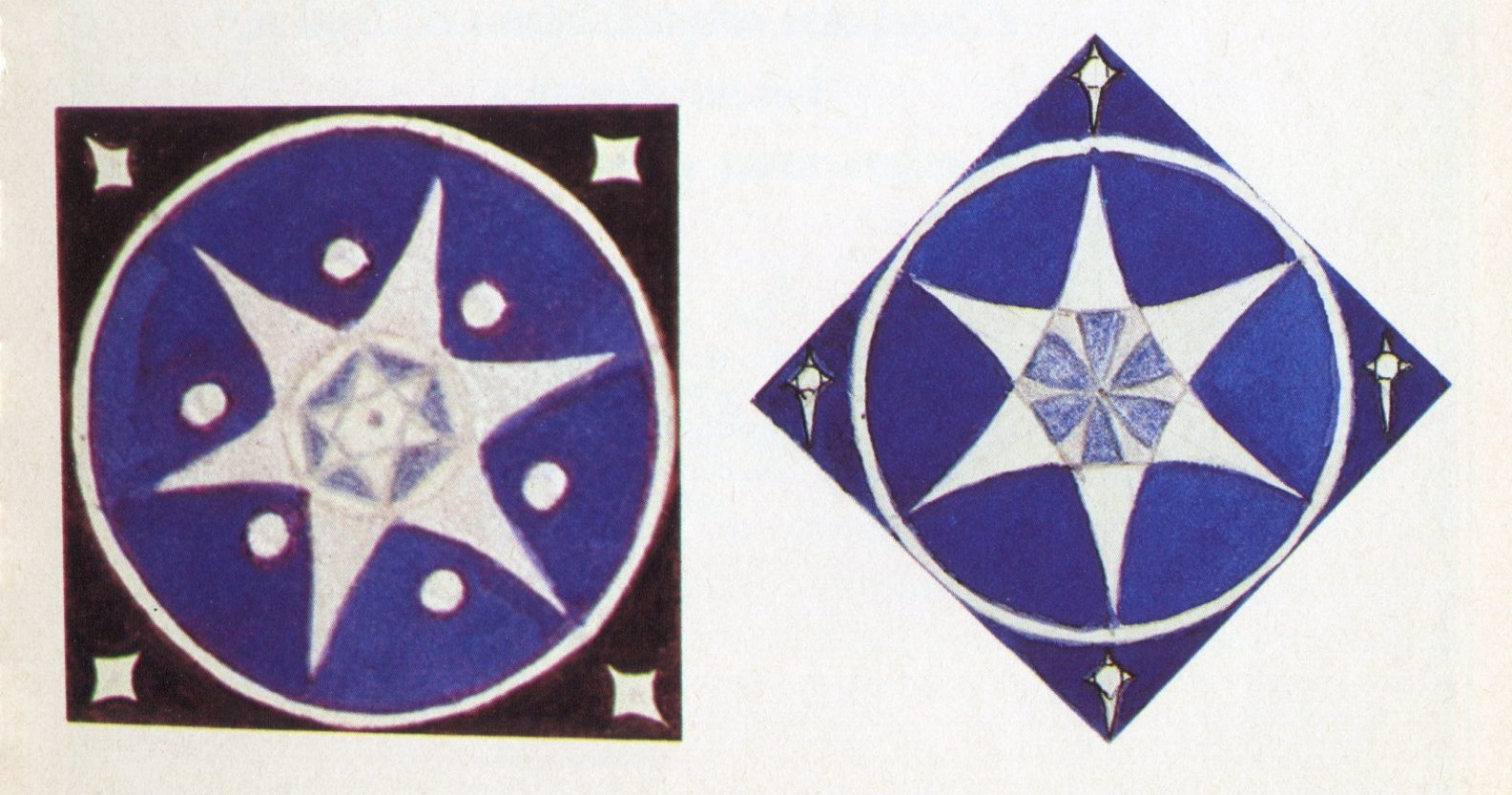
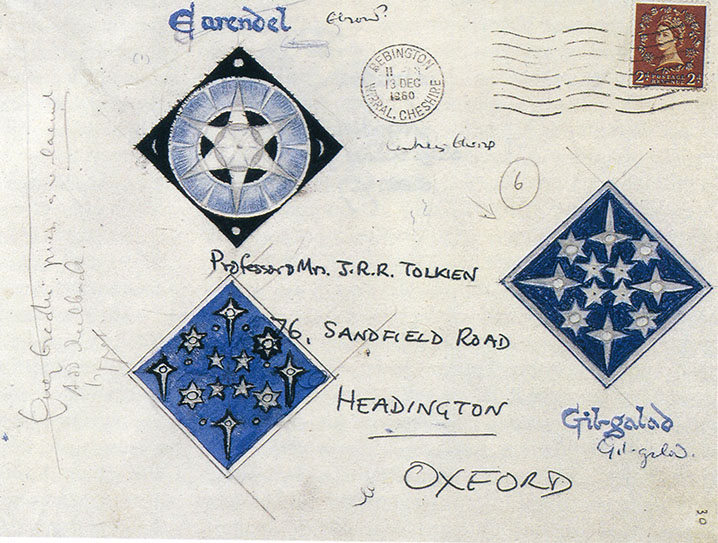
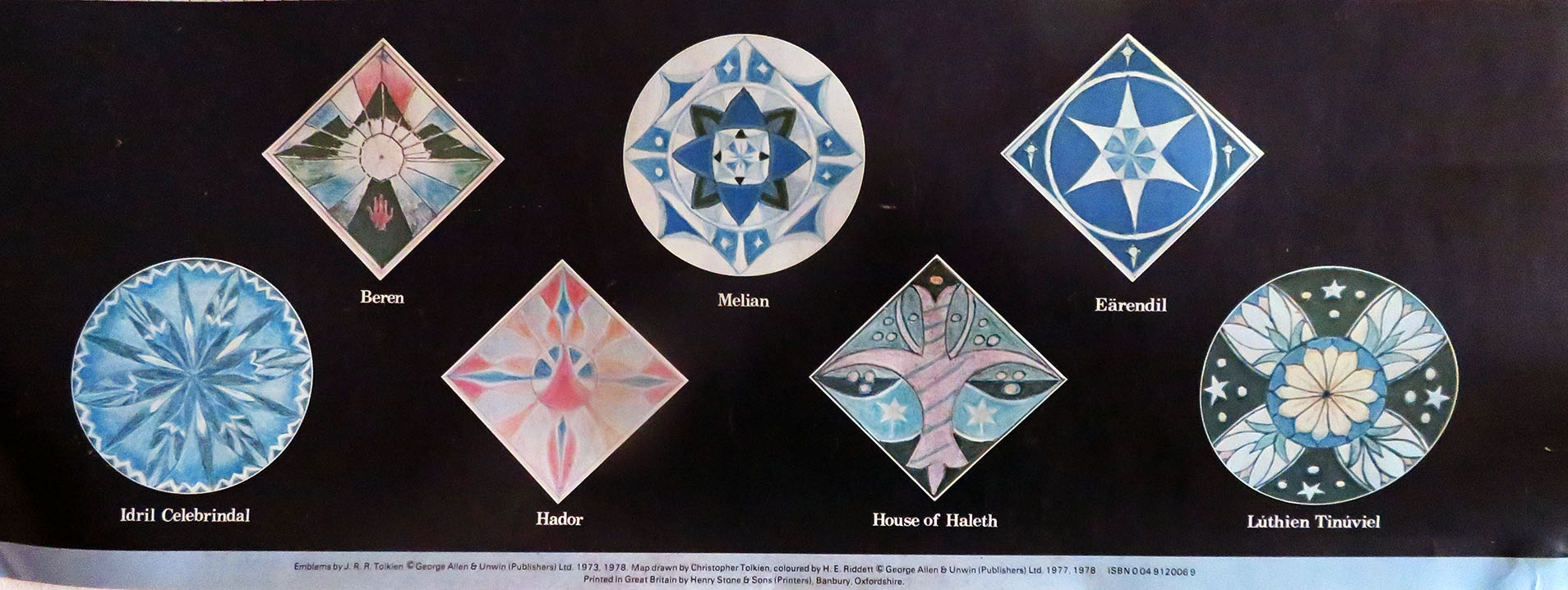
Are you referring to this design?
It appears nowhere else.
The colour has a bad yellow bleed compared with the original.
See the correct colours based on the original (from my reproduction).
It appears nowhere else.
The colour has a bad yellow bleed compared with the original.
See the correct colours based on the original (from my reproduction).
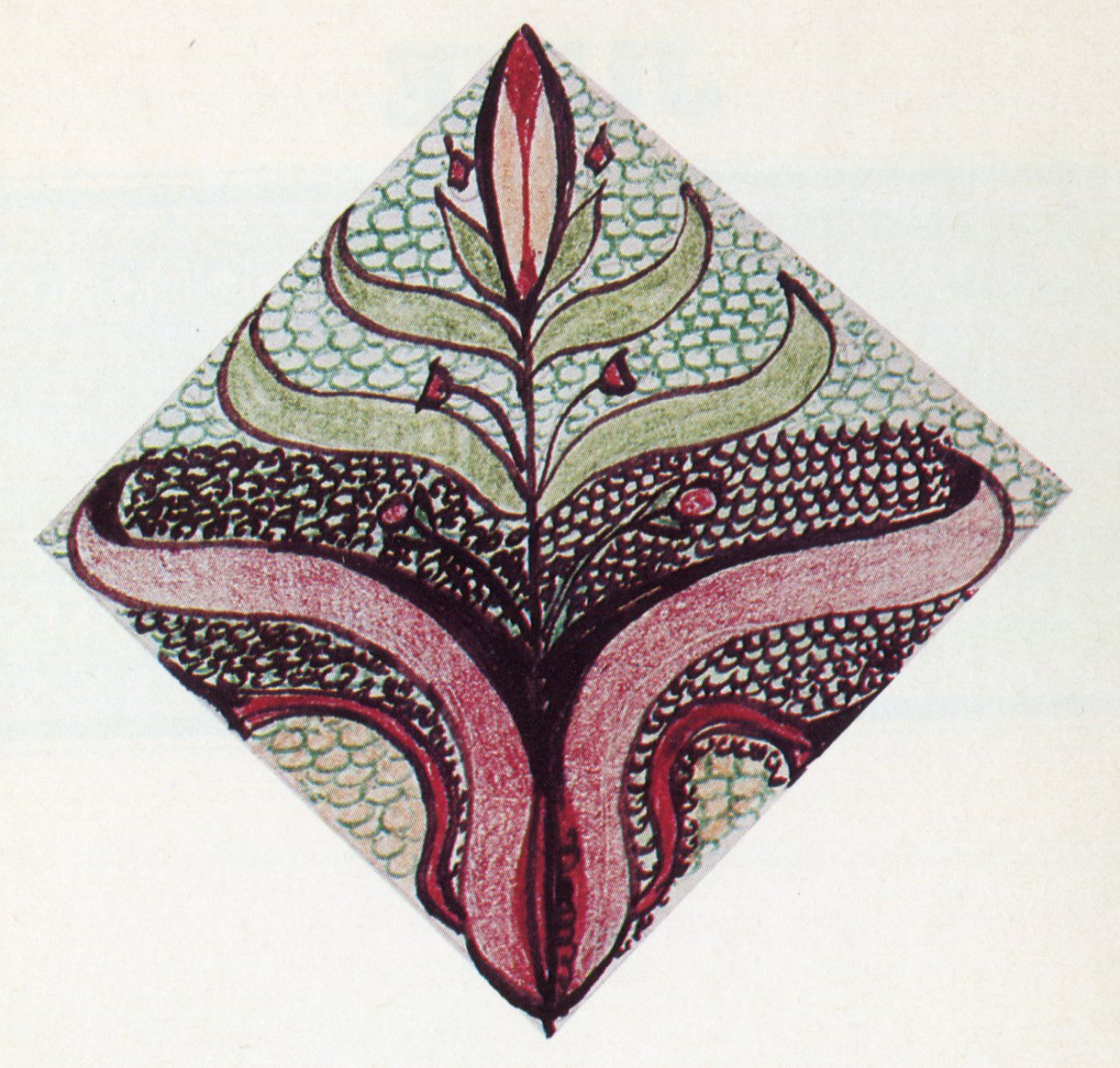
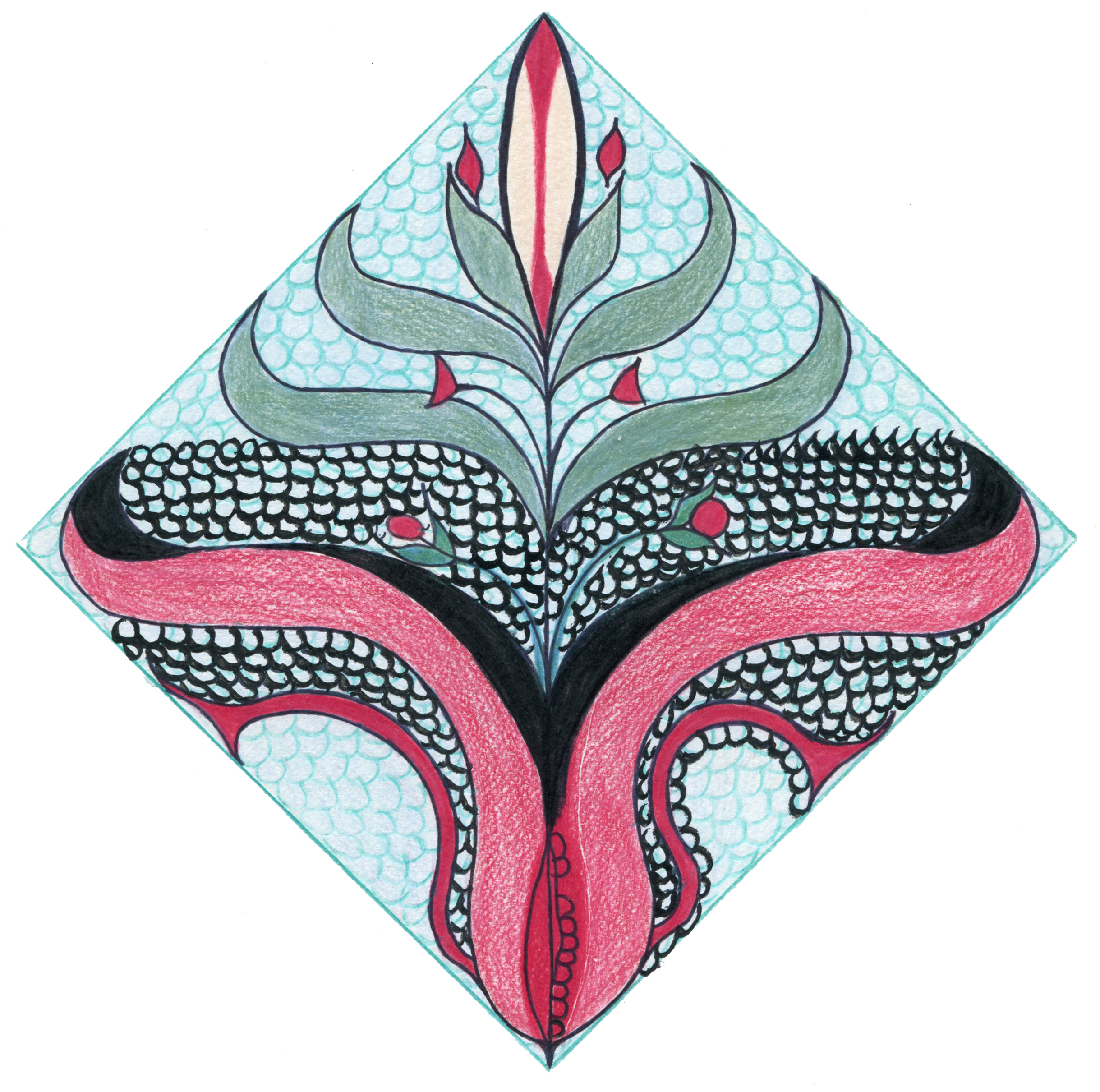
Thank you both, this is really helpful.
I wonder how TAI labelled this as "heraldic device (of man)" but I now see an entry from Hammond and Scull for June labelled "Untitled device". So that image provided for June is definitely that. I will have to ask the TAI how they labelled this "heraldic device (of man)".
https://tai.tolkienists.org/tai/118/ is the listing at TAI.
I wonder how TAI labelled this as "heraldic device (of man)" but I now see an entry from Hammond and Scull for June labelled "Untitled device". So that image provided for June is definitely that. I will have to ask the TAI how they labelled this "heraldic device (of man)".
https://tai.tolkienists.org/tai/118/ is the listing at TAI.
Vanyarin wrote:
Are you referring to this design?
It appears nowhere else.
The colour has a bad yellow bleed compared with the original.
See the correct colours based on the original (from my reproduction).
That is quite some bleed. Thank you for providing both examples, very useful.
As I mention in my above comment this is most certainly the June image labelled on TAI as "heraldic device (of man)?". I'm now intrigued how that labelling appeared.
In general Mannish devices display an axis of symmetry and Elvish devices a rotational symmetry.
The exception is Felagund's device: a Mannish design recollecting Beor's people's first encounter with Finrod.
The exception is Felagund's device: a Mannish design recollecting Beor's people's first encounter with Finrod.
Hi everywere. I found this discussion thanks to a friend. I just finished a few months ago an ultimate study upon the meanings of Silmarillion heraldry; it's only in Italian by now, I'm attempting to have it published in English also.
But, about Earendil's devices, I can report here below my results:
"4.8 Eärendil (1)
Figure 10 - Eärendil's personal device, first version.
Description
The first of a series of three, this device is accompanied by the name "Earendel" in fair blue pen writing, and by two other scribbled words: «Elrond? » and «Elwing».
The shape is a lozenge in accordance with the second Rule. In the fess point dominates a six-points radiated Silmaril, white on a black field; it has six concave edges, circled in light gray.
The central black field is surrounded by a white crown fading into blue, charged with six inverted rays. While the outer field is also black, with two moons facing each other in the sinister (that is, to the right for the observer) and dexter (to the left) corners and two planets at the head and base corners.
The twelve rays touch the inner and outer edges of the crown. The symmetry of rotation is only apparent because it is broken by the alternation of moons and planets: in fact it is axial.
Interpretation
The Silmaril in the center with its six rays evidently represents Eärendil as a person and as the New Star of the firmament. He rises from the dark (central black field), and this can indicate both that the Silmaril he carries has been taken out of the evil darkness of Angband, and that his blessed light breaks the darkness of the nights to instill hope in the world.
The six points of the rays, touching the border of the crown but not the edges of the device, do not seem to indicate a rank, unless they possibly refer to an heir to the throne (of Gondolin) in exile. If the six opposite rays are summed up to them, it returns the number twelve already seen for Idril, which could allude to the sacred mission that Eärendil took on. These six inverted rays remind of thorns, which I believe symbolizes the immense difficulties of his epic journey; however, it is a concept that will be set aside in the definitive device.
The blue faded from white seems to allude to how the sacredness of Silmaril emends the Noldor from the Doom of Mandos (the blue that symbolizes them is dazzled by it). This idea too was later abandoned, in favor of the canonical Noldorin deep blue.
The axial symmetry typical of Edain devices, combined with the elven disk, underlines the double nature of Eärendil, Adan and Elda, that is half-elf.
Finally, the outermost black field with the nocturnal heavenly bodies recalls both the sea voyage (the stars serve as orientation for sailors), and Menel, the Firmament, as the final abode of Eärendil.
As for the names scribbled by the author on the side, they do not necessarily represent second thoughts because he used to write notes of various meanings on sheets of all kinds. A similar problem is also present in the following family device."
But, about Earendil's devices, I can report here below my results:
"4.8 Eärendil (1)
Figure 10 - Eärendil's personal device, first version.
Description
The first of a series of three, this device is accompanied by the name "Earendel" in fair blue pen writing, and by two other scribbled words: «Elrond? » and «Elwing».
The shape is a lozenge in accordance with the second Rule. In the fess point dominates a six-points radiated Silmaril, white on a black field; it has six concave edges, circled in light gray.
The central black field is surrounded by a white crown fading into blue, charged with six inverted rays. While the outer field is also black, with two moons facing each other in the sinister (that is, to the right for the observer) and dexter (to the left) corners and two planets at the head and base corners.
The twelve rays touch the inner and outer edges of the crown. The symmetry of rotation is only apparent because it is broken by the alternation of moons and planets: in fact it is axial.
Interpretation
The Silmaril in the center with its six rays evidently represents Eärendil as a person and as the New Star of the firmament. He rises from the dark (central black field), and this can indicate both that the Silmaril he carries has been taken out of the evil darkness of Angband, and that his blessed light breaks the darkness of the nights to instill hope in the world.
The six points of the rays, touching the border of the crown but not the edges of the device, do not seem to indicate a rank, unless they possibly refer to an heir to the throne (of Gondolin) in exile. If the six opposite rays are summed up to them, it returns the number twelve already seen for Idril, which could allude to the sacred mission that Eärendil took on. These six inverted rays remind of thorns, which I believe symbolizes the immense difficulties of his epic journey; however, it is a concept that will be set aside in the definitive device.
The blue faded from white seems to allude to how the sacredness of Silmaril emends the Noldor from the Doom of Mandos (the blue that symbolizes them is dazzled by it). This idea too was later abandoned, in favor of the canonical Noldorin deep blue.
The axial symmetry typical of Edain devices, combined with the elven disk, underlines the double nature of Eärendil, Adan and Elda, that is half-elf.
Finally, the outermost black field with the nocturnal heavenly bodies recalls both the sea voyage (the stars serve as orientation for sailors), and Menel, the Firmament, as the final abode of Eärendil.
As for the names scribbled by the author on the side, they do not necessarily represent second thoughts because he used to write notes of various meanings on sheets of all kinds. A similar problem is also present in the following family device."
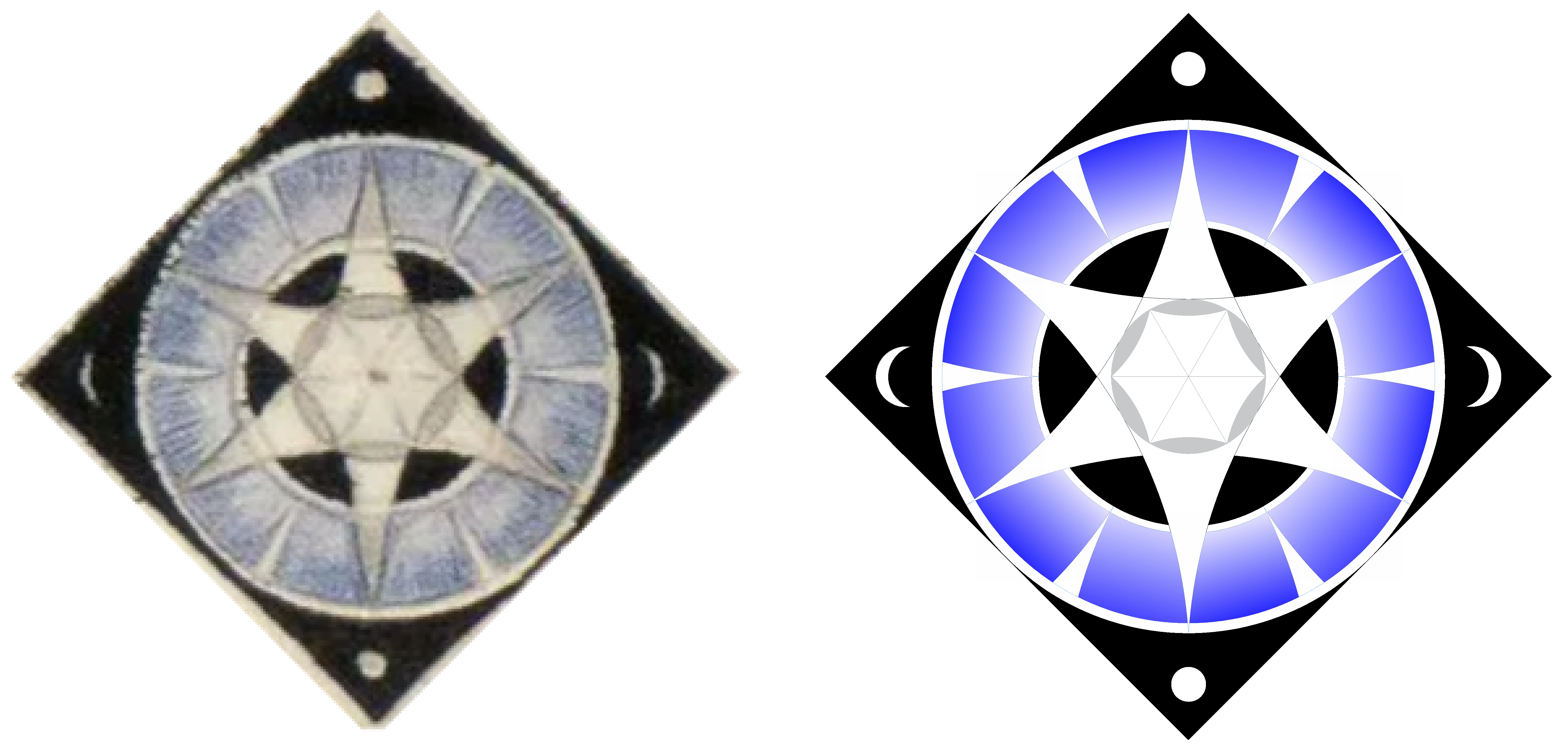
"4.9 Eärendil (2)
Figure 11 - Final version of Eärendil's personal device, and that of his House.
Description
The two devices are extremely similar to each other; the House one, designed in a rather crude way, could therefore precede the personal one, which instead was drawn with care; it is accompanied by the scribbled names "Finwë" "(Haleth)" (?) and "Fingolfin" on one side, and "Dior" in red on the other.
The shapes are a lozenge and a square, in accordance with the second and third Rule. In the fess point, a Silmaril in the shape of a six-point radiated star charges a deep blue disk orled white.
The Silmaril has a complex shape in both devices. In the personal one it is blue, hexagonal, divided as if the star was contained therein, and it has a slightly circled blue dot in its center; the six rays are white. In the House one, it is rather a gray star in a white disk, inscribed in a concave gray hexagon; the six rays are here light blue orled white.
The rays touch the edge of the disk, which is also charged by six small white disks.
The whole is on a black field with a four-pointed star in each of the corners. The symmetry is double of rotation: the stars and the disk rotate independently.
In the House device, at least two stars seem to have a tail, so transforming the symmetry into axial, this is not repeated in the other one.
Interpretation
The notes on the side of the House device - the first three at least - seem to have nothing to do with its attribution but rather to represent a sort of memorandum, on those devices already done or still to be done. The writing "Dior" could follow the same logic, or hypothesize the coat of arms to be attributable to the descendants of the half-elves starting from this character. I think the first one is more sustainable, because Dior was part of the Gray Elves while the device has, as opposite, a strong noldorin imprint (it is characterized by blue and the disk).
The differences between personal and House devices are reduced to details, which probably makes these two the final evolution of the previous one.
The interpretation also remains roughly the same. The major differences are given by the disappearance of the central darkness, and by the crown that expands to take its place and becomes a deep blue disk, exchanging the six thorns with as many small white disks; I believe that here the intent is to symbolize Arda and above all Belegaer (the Ocean), and at the same time the great journey of Eärendil and the unknown lands he touched in laboriously searching for the leg to the West. But at the same time the blue remains a symbol of the Noldor, of whose lineage Eärendil is part. The white orle almost certainly represents the Blessed Realm, Valinor, destination and happy end of the journey.
The symmetry, after the hesitation of the House device, in the end is again of rotation, because Eärendil will be granted the fate of the Firstborn; and it is perfect, as a sign of an unblemished character. At the same time it is double, as double is the nature of him, of Firstborn and Secondborn (or, if desired, also axial and of partial rotation, with the same meaning).
The four stars on a black field represent the cardinal points, that is orientation during navigation; but also Menel, the sky, as in the previous figure. And perhaps they also suggest the rank of a prince in exile (their points do not reach the edges).
The fatal number twelve does not disappear, but is hidden in the doubling between external rays and internal points of the Silmaril. Certainly, however, the most evident number is six, which could be a celebration of the concept of the Star, suggested by the choice of the six-pointed shape.
It is observed that the color and shape of the Silmaril change in each of the three devices, a sign of the author's constant rethinking. In particular, the dot in the middle of the more definite and definitive one seems to allude to the dual nature of the New Star, Eärendil and Silmaril, distinguished and yet as one."
Hope this helps.
Figure 11 - Final version of Eärendil's personal device, and that of his House.
Description
The two devices are extremely similar to each other; the House one, designed in a rather crude way, could therefore precede the personal one, which instead was drawn with care; it is accompanied by the scribbled names "Finwë" "(Haleth)" (?) and "Fingolfin" on one side, and "Dior" in red on the other.
The shapes are a lozenge and a square, in accordance with the second and third Rule. In the fess point, a Silmaril in the shape of a six-point radiated star charges a deep blue disk orled white.
The Silmaril has a complex shape in both devices. In the personal one it is blue, hexagonal, divided as if the star was contained therein, and it has a slightly circled blue dot in its center; the six rays are white. In the House one, it is rather a gray star in a white disk, inscribed in a concave gray hexagon; the six rays are here light blue orled white.
The rays touch the edge of the disk, which is also charged by six small white disks.
The whole is on a black field with a four-pointed star in each of the corners. The symmetry is double of rotation: the stars and the disk rotate independently.
In the House device, at least two stars seem to have a tail, so transforming the symmetry into axial, this is not repeated in the other one.
Interpretation
The notes on the side of the House device - the first three at least - seem to have nothing to do with its attribution but rather to represent a sort of memorandum, on those devices already done or still to be done. The writing "Dior" could follow the same logic, or hypothesize the coat of arms to be attributable to the descendants of the half-elves starting from this character. I think the first one is more sustainable, because Dior was part of the Gray Elves while the device has, as opposite, a strong noldorin imprint (it is characterized by blue and the disk).
The differences between personal and House devices are reduced to details, which probably makes these two the final evolution of the previous one.
The interpretation also remains roughly the same. The major differences are given by the disappearance of the central darkness, and by the crown that expands to take its place and becomes a deep blue disk, exchanging the six thorns with as many small white disks; I believe that here the intent is to symbolize Arda and above all Belegaer (the Ocean), and at the same time the great journey of Eärendil and the unknown lands he touched in laboriously searching for the leg to the West. But at the same time the blue remains a symbol of the Noldor, of whose lineage Eärendil is part. The white orle almost certainly represents the Blessed Realm, Valinor, destination and happy end of the journey.
The symmetry, after the hesitation of the House device, in the end is again of rotation, because Eärendil will be granted the fate of the Firstborn; and it is perfect, as a sign of an unblemished character. At the same time it is double, as double is the nature of him, of Firstborn and Secondborn (or, if desired, also axial and of partial rotation, with the same meaning).
The four stars on a black field represent the cardinal points, that is orientation during navigation; but also Menel, the sky, as in the previous figure. And perhaps they also suggest the rank of a prince in exile (their points do not reach the edges).
The fatal number twelve does not disappear, but is hidden in the doubling between external rays and internal points of the Silmaril. Certainly, however, the most evident number is six, which could be a celebration of the concept of the Star, suggested by the choice of the six-pointed shape.
It is observed that the color and shape of the Silmaril change in each of the three devices, a sign of the author's constant rethinking. In particular, the dot in the middle of the more definite and definitive one seems to allude to the dual nature of the New Star, Eärendil and Silmaril, distinguished and yet as one."
Hope this helps.

I think it's the phases of Venus. Venus's phase is unique in that the diameter of the crescent is much larger than full Venus, a feature that appears in this device. Also, it is stars in the other 2 versions.Ereinion wrote:
two moons facing each other in the sinister (that is, to the right for the observer) and dexter (to the left) corners and two planets at the head and base corners.
Ligandil wrote:
I discovered this old thread today, while doing some research of Eärendil's emblem.
Does someone know if the six-pointed star (why six?), the six white circles and the four white diamonds have a meaning?
The other design has the same star and diamonds, but no circles.
Huge thanks!
Some time ago I asked about Eärendil's emblem, and many of you kindly helped me clarifying the meaning of it. He's always been one of my favorite characters: his story, what he represents, the link to "our world's" Astronomy.
Recently I got the second design as a tattoo, and so I wanted to share it here. Thank you all for your help
 !
!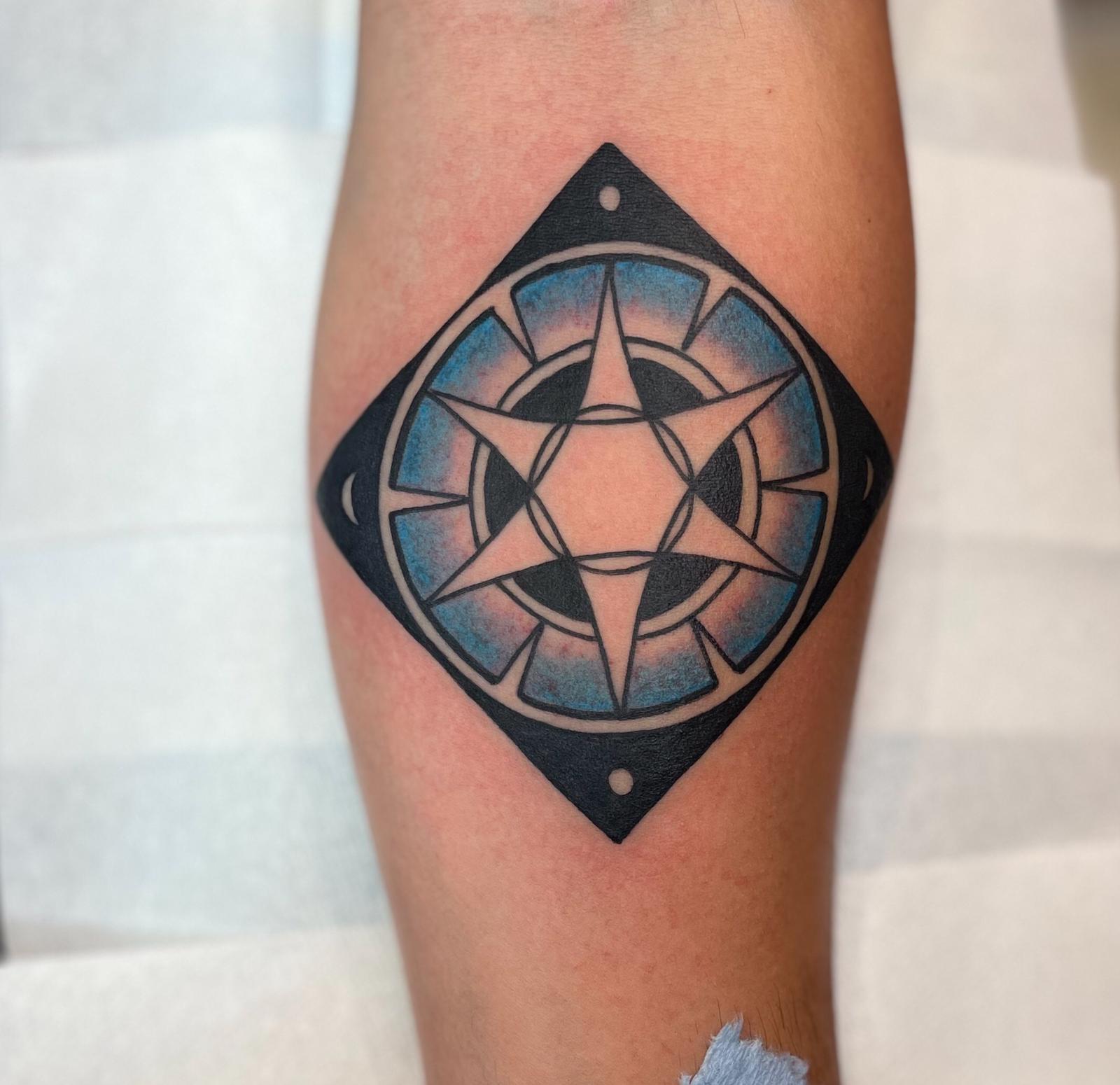







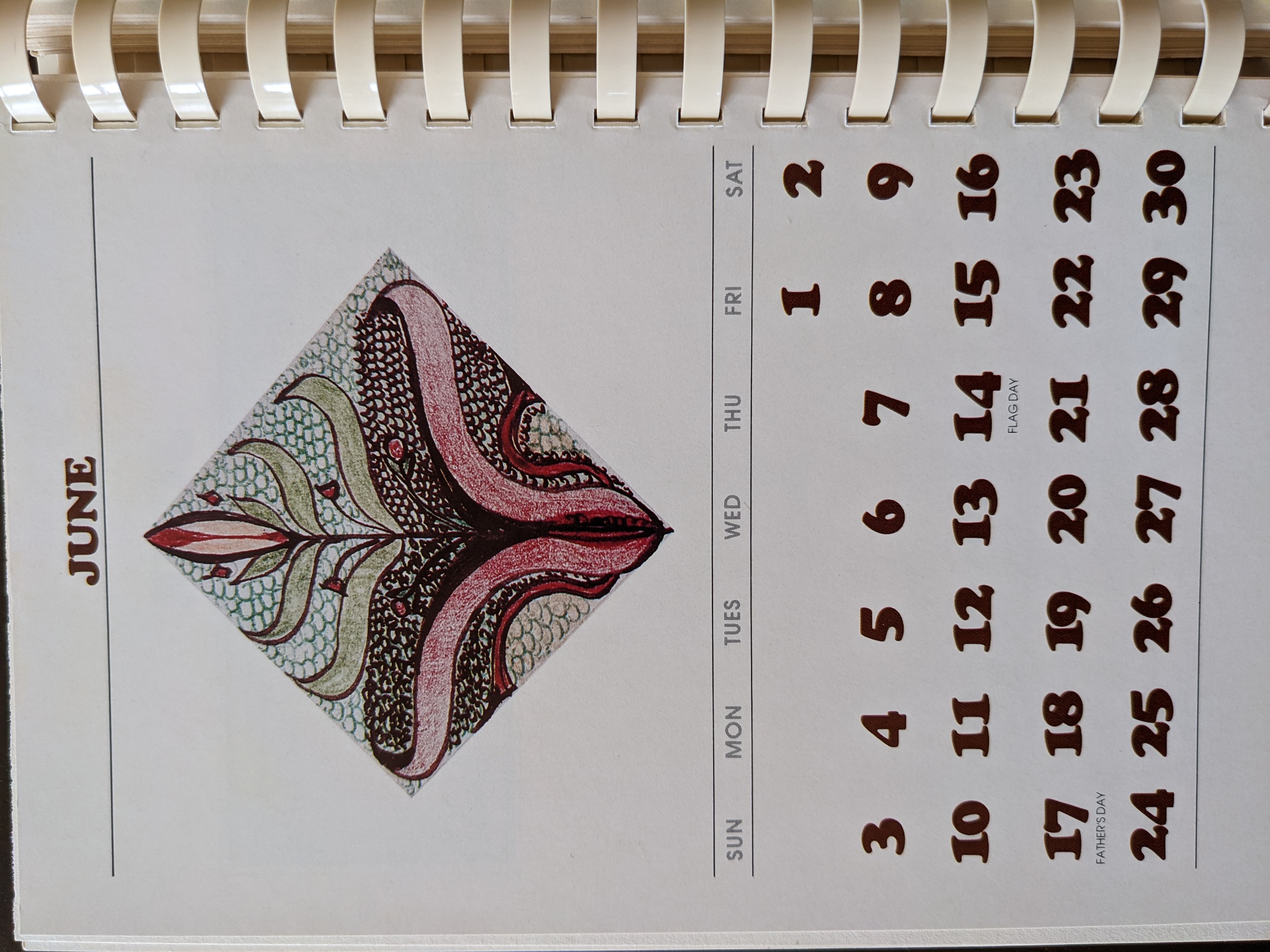


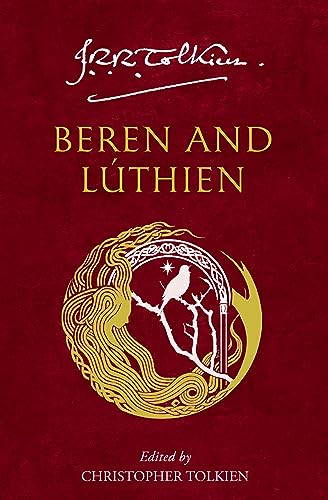
 1
1 223
223